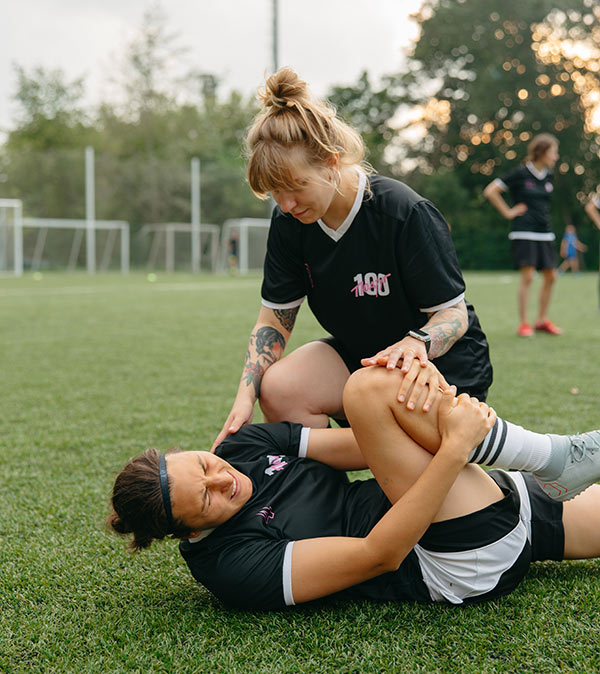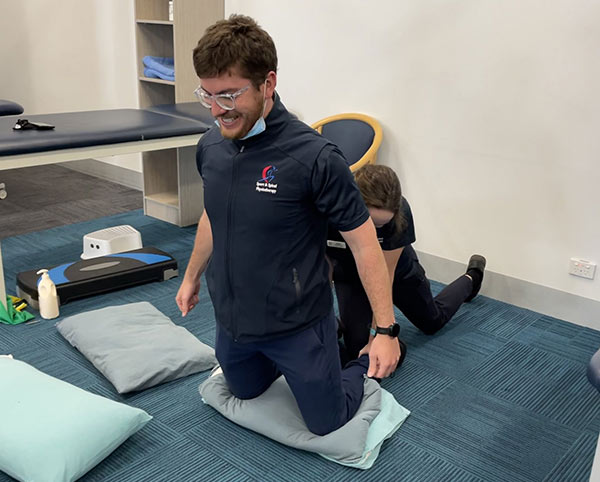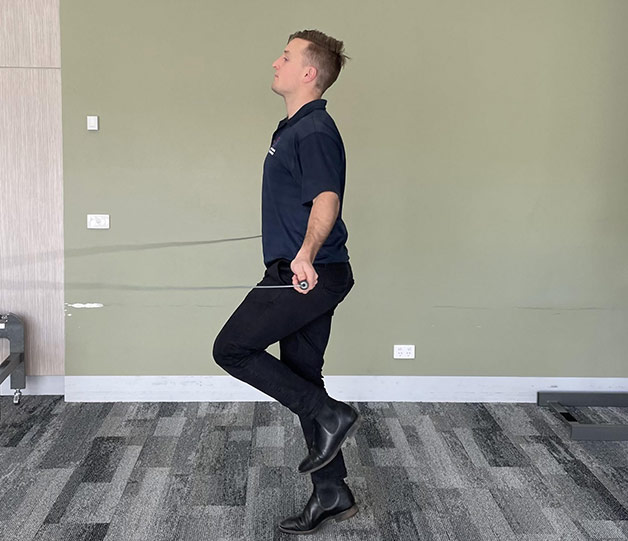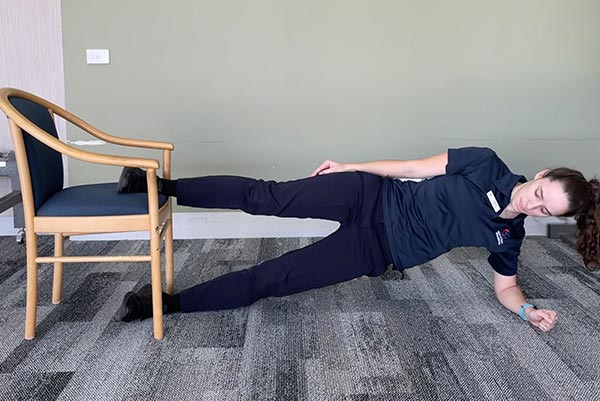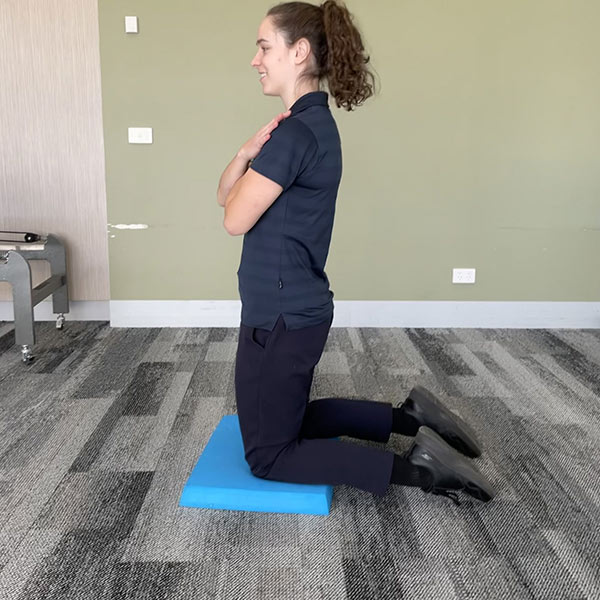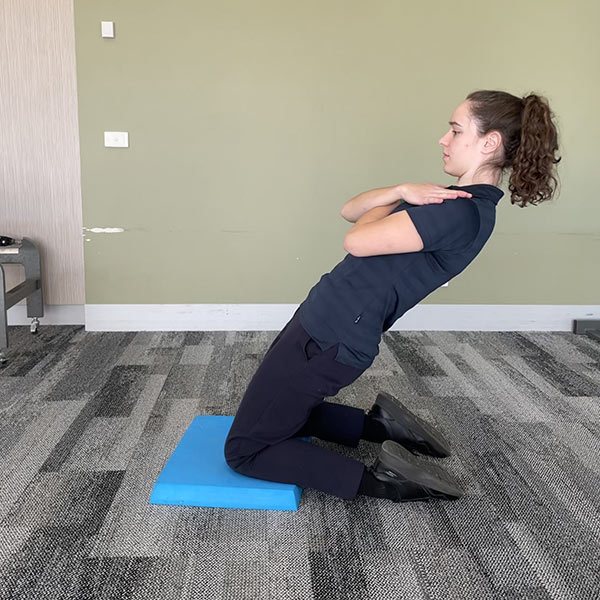Reduce Soccer Injuries this Season with These 4 Strength Exercises
Reduce soccer injuries with some very effective strength training exercises. With the soccer season almost underway, the clinic will be busy treating a lot of preventable muscular injuries such as quad, hamstring, groin and calf muscle injuries. Soccer is a demanding sport with high numbers of sprint efforts, changing direction and interacting with other players as well as kicking the ball, jumping and landing.
A paper assessing European Club football identified the average number of sprints per game was 11, but this can deviate up or down by 5 sprints. Around 90% of these sprints lasted less than 5 seconds (Andrzejewski et al. 2015). Aleksandr Golovin, Russian superstar, clocked 137 sprint efforts in a single game!
Load Management and Soccer Injuries
Managing overall training load is a very effective way to reduce the risk of injuries in sporting and general populations. As outlined in Figure 1 below, ‘Danger Zone’ is when training load increases sudden by fifty to one hundred percent. For example, a soccer player who has not done any sprint training over summer and starts sprinting twice a week for pre-season.
Firstly, to improve your body’s capacity to tolerate sprinting… do more sprinting! Mendiguchia et al published a study in 2020 advocating for the programming of sprint training in athletes susceptible to hamstring injuries. It makes a lot of sense that doing more sprint training actually improves our capacity to handle sprint training. Consider the first training session back after a week long Christmas holiday, I am sure you would agree that it would be a tough session. Introducing additional sprint sessions into your weekly training routine is a difficult process for athletes midway through a soccer season and is best done over summer.
1. Hamstring Training to Reduce Soccer Injuries
Strength training is a great way to develop your resilience to musculoskeletal injuries when playing sports that require running. The hamstring muscles are located at the back of the thigh, their function is to bend the knee and push the hip backward and therefore they are used in a demanding way when sprinting. A brilliant strength exercise to prepare your body for this demand is the Nordic Drop. This exercise can be performed without any fancy equipment and only needs to be performed in low repetitions. As you can see, a partner holds the heels down while the other person kneels on the floor. The kneeling person then slowly lowers themselves down to the floor by straightening the knees.
A study published by Petersen et al. in 2011 demonstrate a 10-week strengthening program using the Nordic Drop exercise to be very effective at reducing the number of hamstring injuries sustained in a Danish amateur soccer club. By the end of the 10-week program you will only need to maintain 3 sets of the exercise once per week!
| Week | Sessions per week | Sets x Reps |
| 1
2 3 4 5-10 10+ |
1
2 3 3 3 1 |
2 x 5
2 x 6 3 x 6-8 3 x 8-10 3 x (12, 10, 8) 3 x (12, 10, 8) |
2. Calf Training to Reduce Soccer Injuries
The calf muscles are the most used muscle when running at any speed. They are located at the back of your shin and attach down into the Achilles tendon at the heel. These muscles absorb 6.5-8x your body weight when you run (Nord, 2012). So, what is the best way to build tolerance in these muscles? A study published in 2020 by García-Pinillos et al. in 2020 demonstrated jump rope to be a great way to improve lower limb power, run times and foot arch stiffness! The authors recommend you complete 2 sessions of 10 minutes skipping per week and build to 4 sessions of 20 minutes over a 10-week period.
For those who struggle to coordinate skipping, you can perform the exercise without a jump rope. The purpose of the exercise is to jump from your left to your right foot, trying to be quick off the floor and land softly. This is a great way to build elasticity in the Achilles tendon, reactive speed contracting the calf muscles and build strength.
Related Reading:
>> 4 Steps to Overcoming Knee Injuries for Female Soccer Player
>> 4 Easy Steps to Reduce the Risk of Soccer (Football) Injuries
3. Groin Muscle Training to Reduce Soccer Injuries
Groin pain is common in soccer players due to the repetitive kicking that takes place. The muscles of the groin area are used more when kicking a soccer ball in comparison to other sports due to the sweeping technique. The role of the groin muscles (also known as adductors) is to bring the leg across the body, as such they are used in a demanding way when kicking a ball.
A great way to build strength and resilience in the groin muscles is through high intensity strength training. A study published in 2019 (Harøy et al) reported 41% reduction in groin pain risk with an 8-week Copenhagen Adduction program. The Copenhagen Adduction exercise (figure 7) involves laying on your side and placing your top foot on the chair (or a having a partner hold it) while lifting the lower leg. As you can see this exercise looks easy but I promise it is difficult!
4. Quad Training to Reduce Soccer Injuries
The quadricep muscle group are in the front of the thigh and included four muscles. One particular muscle is used when kicking, the rectus femoris muscle. The main function for this muscle is to straighten your knee while bringing your hip forward. This is the exact action of kicking a ball, which is then done repetitively for most soccer players. To build strength and resilience in this muscle group, the Reverse Nordic exercise can be performed as pictured below.
Kneel on something soft to protect your knees and keep your body upright. Maintain this position while allowing your knees to bend slowly as pictured, then return to the start position. Start with 2 sets of 6 twice per week and build up to 3 sets of 10-12 three time week over an 8 week training period.
In conjunction with these great strength exercises, don’t forget to warm up prior to playing. That doesn’t mean just going for a run around the oval. Warming up correctly is another tool to help reduce your risk of injury. Alex has written a great article on this topic and outlines the FIFA 11+ (https://www.youtube.com/watch?v=RSJIp7e7fyY) which is a fantastic guide on how to warm up correctly.
In summary, soccer is a demanding sport, but we can effectively prepare our body and reduce our risk of injury by training smarter. Book in with a physiotherapist to help you establish good training behaviours and reduce your risk of injury.
